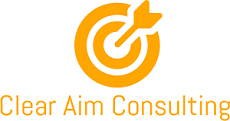New Advanced Find Tutorial
Advanced Find has changed - is it for the better?!
Finding and then acting on information in model-driven apps can take two forms: Searching for specific records (which was recently modernized recently through Dataverse search) and exploring a table for record sets that meet a specific criterion: Advanced find.
Recently Microsoft announced the availability of modern advanced find that not only replaces the legacy experience but also adds new enhancements to view personalization to help you be more productive with model-driven apps.
Explore data through advanced filters on any table in the app
Using the global search bar in the header, you can now choose any table in the app to perform a structured search. Choosing a table navigates you to the familiar grid page, with filter options immediately available to work with.
View selector enhancements to help you create and find views easily
After you have edited the filters and included the right columns in the view, you can find the options to create a personal view within the view selector, along with other options to manage the view list.
As you create more views, you can browse them easily in the view selector, with personal views annotated with an icon. You can also search for a view by name so you can be more productive in navigating between different pivots of data.
Personalization options to see the most relevant views
If you have created a lot of personal views over time, finding the right view quickly can be difficult. With two new powerful personalization options available with modern advanced find, you can make the view list your own, so the most relevant views are easily accessible.
Hiding a view in the view list
You can hide one or more views in the view list to ensure only the most relevant views show up in the view selector. Views are hidden only for you across all devices for that table in the environment.
Changing the order of views
You can make the list of views appear in one of three preset orders. If you have tables in which you prefer to use system views over personal views, you can change the order of views in the view selector across all devices for that table in the environment.
View management options to collaborate with views
You can also collaborate with your team members by sharing personal views just like you would share any other record.
Administrators can enable modern advanced find through a feature setting in Power Platform Admin Center.




